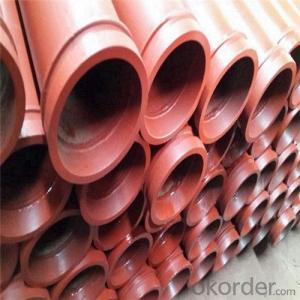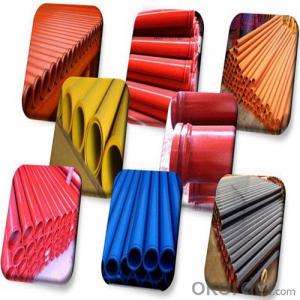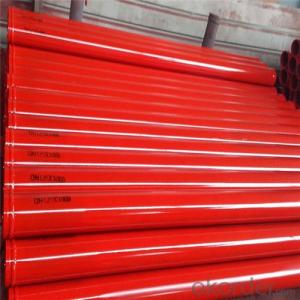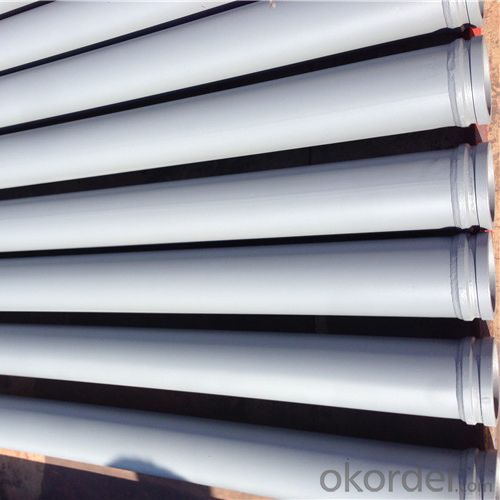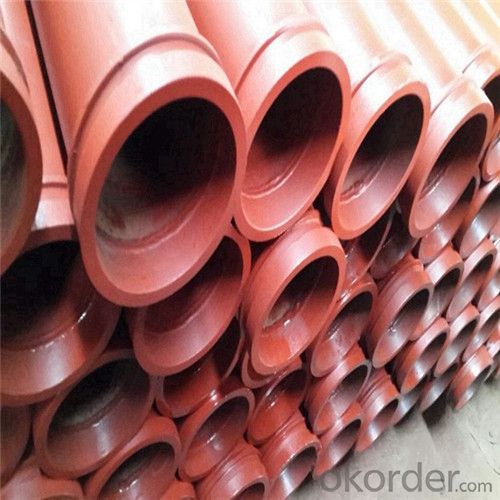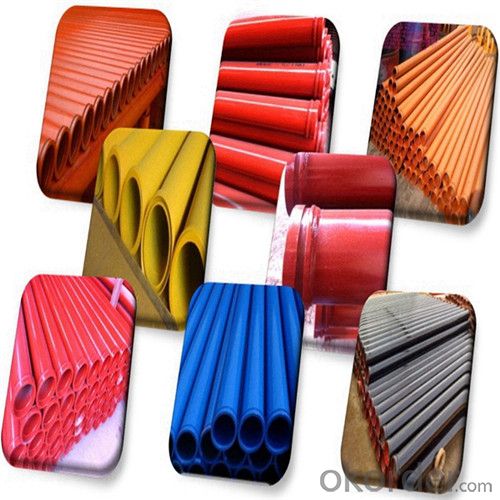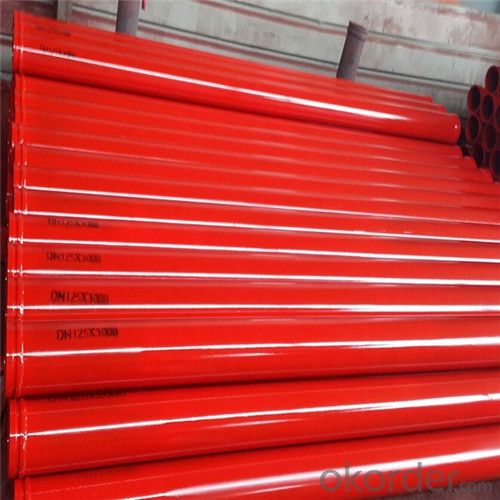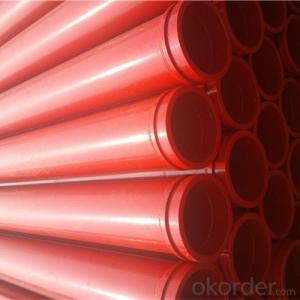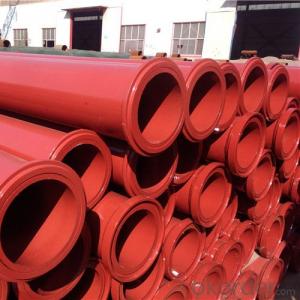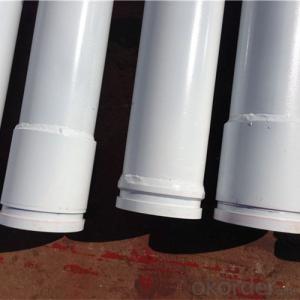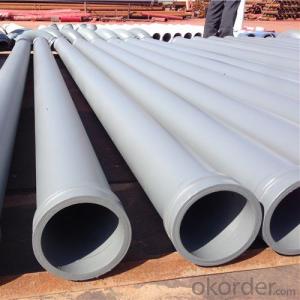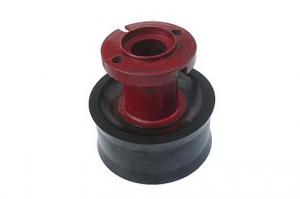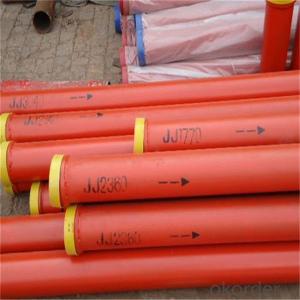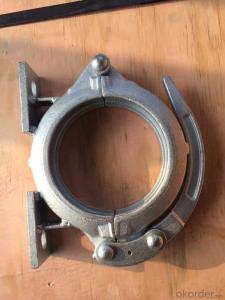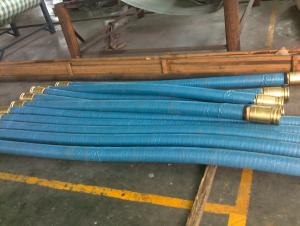3M Seamless Delivery Pipe for Concrete Pump Thickness 4.5mm
- Loading Port:
- Tianjin
- Payment Terms:
- TT or LC
- Min Order Qty:
- 50 pc
- Supply Capability:
- 5000 pc/month
OKorder Service Pledge
OKorder Financial Service
You Might Also Like
3M Seamless Delivery Pipe for Concrete Pump Thickness 4.5mm
1. Structure of 3M Seamless Delivery Pipe for Concrete Pump Thickness 4.5mm:
St52 Seamless Pipe: Now More People like use this kind for Truck Pump and Trailer Pump because of the quality is better and it is seamless kind, so this kind pipe is most popular in Middle East Price About 34USD-37USD.
Wear Resistant Pipe: Use for Truck Pump, Wear Resistant Layer is 2.5mm.Through heat treatment way make this pipe more strong (HRC60-62), Using Life: 25,000m³-35,000m³ Price about 65USD-68USD.
Two Wall Pipe: This pipe thickness (2mm+2.5mm), Using Life about 50,000m³-60,000m³
2. Main Features of 3M Seamless Delivery Pipe for Concrete Pump Thickness 4.5mm:
• High Wear-resistant, long service life, lower cost
• In case of quality problem the company provide free replacement.
• Provide technical support for free.
• Provide consumers with regular visits
• Ensure the supply of ancillary parts
• ISO9000 & 3C certificate
3. 3M Seamless Delivery Pipe for Concrete Pump Thickness 4.5mm Images
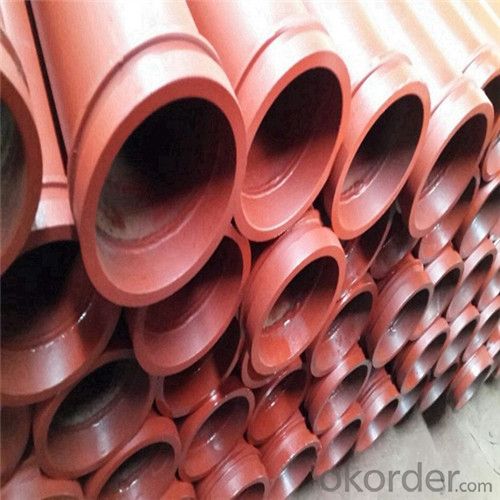
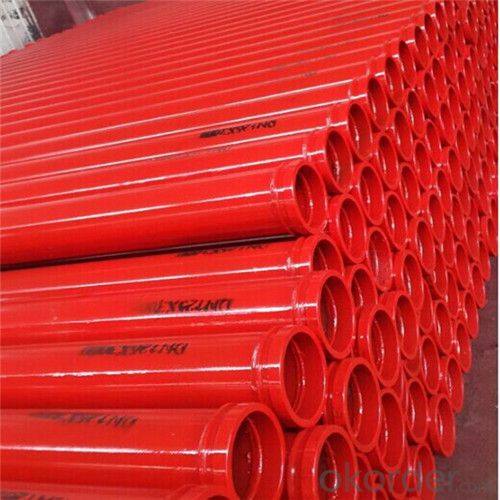
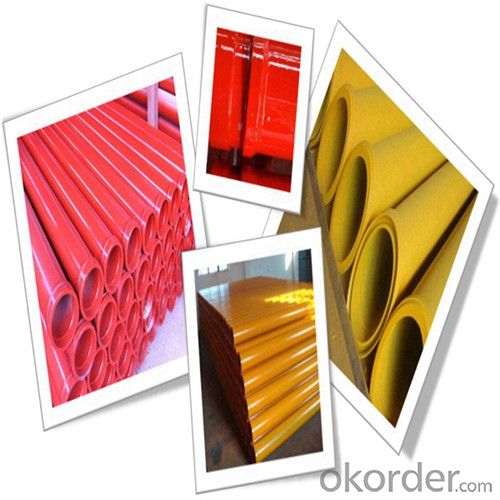
4. 3M Seamless Delivery Pipe for Concrete Pump Thickness 4.5mm Specification
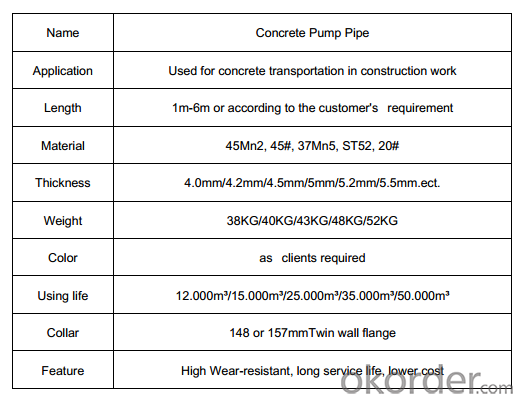
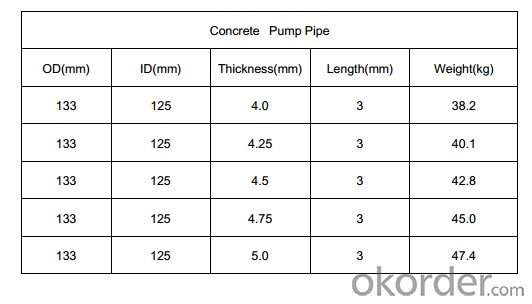
Production Process
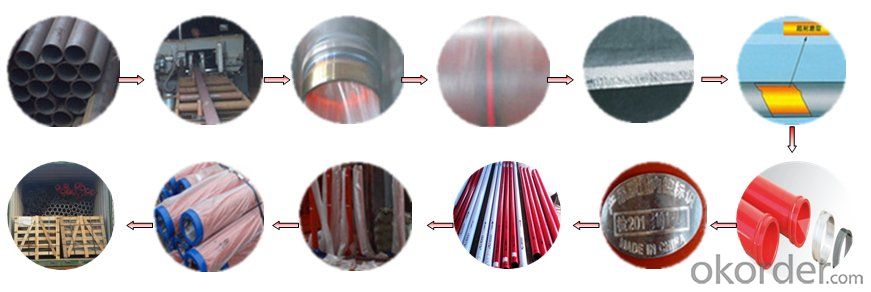
5. FAQ
We have organized several common questions for our clients, may help you sincerely:
①Is your products exported a lot?
We have exported to many, many countries. Every year we ship more than 30 containers of these spare parts. Our main market is in Middle-east, Asia & Africa.
②How to guarantee the quality of the products?
We have established the international advanced quality management system,every link from raw material to final product we have strict quality test;We resolutely put an end to unqualified products flowing into the market. At the same time, we will provide necessary follow-up service assurance.
- Q: Where can I buy concrete pump spare parts?
- You can buy concrete pump spare parts from various suppliers and manufacturers. Some common places to find these spare parts include specialized construction equipment stores, online marketplaces, and directly from the manufacturer's website.
- Q: What are the different types of concrete pump hopper cylinders seals?
- Concrete pump hopper cylinder seals come in various types, each catering to specific needs and requirements. The most commonly used types are as follows: 1. Piston seals: These seals prevent leakage between the piston and cylinder bore. They are typically crafted from durable materials like rubber or polyurethane, ensuring resistance to wear and tear. 2. Rod seals: Installed on the piston rod, rod seals prevent leakage between the rod and cylinder head. They are commonly made of rubber or fabric-reinforced rubber, delivering reliable sealing even in high-pressure conditions. 3. Wiper seals: These seals are utilized to remove dirt, dust, and other contaminants from the retracting piston rod. They are usually composed of polyurethane or rubber, effectively sealing and protecting the cylinder. 4. Wear rings: Employed to decrease friction and prevent metal-to-metal contact between the piston and cylinder bore, wear rings are usually made of materials like bronze or Teflon. They significantly extend the cylinder's lifespan by reducing wear and tear. 5. Backup rings: These rings provide additional support and stability when used alongside other seals. Typically crafted from materials like rubber or PTFE, backup rings prevent extrusion and damage to the primary seal. In summary, the choice of the appropriate concrete pump hopper cylinder seal relies on factors such as the specific application, operating conditions, and desired performance characteristics. It is crucial to select seals that are compatible with the material being pumped, offer effective sealing, and have a long lifespan to ensure optimal performance and minimize maintenance needs.
- Q: How can a faulty gearbox affect the pump's performance?
- A faulty gearbox can significantly impact the performance of a pump. The gearbox is responsible for transmitting power from the motor to the pump, and any dysfunction in this component can lead to various issues. Firstly, a faulty gearbox can cause a decrease in the pump's efficiency. The gearbox is designed to regulate the speed and torque of the pump, ensuring that it operates at optimal levels. If the gearbox is faulty, it may not be able to provide the necessary power to the pump, resulting in reduced performance and lower efficiency. This can lead to increased energy consumption and decreased overall productivity. Additionally, a faulty gearbox can cause the pump to experience excessive vibration and noise. A properly functioning gearbox helps to absorb and distribute the forces generated during operation, reducing vibration and noise levels. However, if the gearbox is faulty, it may fail to dampen these forces adequately, resulting in increased vibrations and noise. This can not only affect the pump's performance but also lead to premature wear and tear of other components, further impacting its overall efficiency. Furthermore, a faulty gearbox can result in inconsistent flow rates and pressure fluctuations. The gearbox plays a crucial role in controlling the speed and output of the pump. If the gearbox is malfunctioning, it may not be able to maintain a consistent flow rate or pressure, leading to fluctuations in the pump's performance. Inconsistent flow rates can disrupt processes that rely on precise volumes or pressures, causing inefficiencies and potential damage to downstream equipment. In conclusion, a faulty gearbox can have a detrimental effect on the performance of a pump. It can lead to decreased efficiency, increased vibrations and noise, as well as inconsistent flow rates and pressure fluctuations. Therefore, regular maintenance and prompt repair or replacement of faulty gearboxes are essential to ensure the optimal functioning of pumps and prevent any further damage or operational issues.
- Q: Are there any environmental considerations in the production of concrete pump spare parts?
- Yes, there are several environmental considerations in the production of concrete pump spare parts. Firstly, the manufacturing process of these parts typically involves the use of various materials and chemicals that can have negative environmental impacts. For example, the production of steel components may require the extraction of iron ore and the emission of greenhouse gases during the smelting process. Similarly, the production of rubber parts may involve the use of petroleum-based materials, which contribute to carbon emissions and pollution. Furthermore, the disposal of concrete pump spare parts after their useful life can also pose environmental challenges. If not properly managed, these parts can end up in landfills, contributing to waste accumulation and potential soil and water contamination. Therefore, it is important to consider the recyclability and reusability of these spare parts during their design and production stages. To address these environmental concerns, manufacturers can adopt sustainable practices in the production of concrete pump spare parts. This may involve incorporating recycled materials into the manufacturing process, such as using recycled steel or rubber. Additionally, manufacturers can implement efficient production techniques to minimize waste generation and reduce energy consumption. Proper waste management and recycling programs should also be established to ensure the responsible disposal of these spare parts at the end of their life cycle. Overall, by considering the environmental impacts associated with the production and disposal of concrete pump spare parts, manufacturers can contribute to a more sustainable and environmentally friendly industry.
- Q: How often should a concrete pump wear plate be replaced?
- The replacement frequency of a concrete pump wear plate relies on various factors, such as the type and volume of concrete being pumped, as well as the pump's quality and maintenance. Nonetheless, it is advisable to regularly inspect the wear plate and evaluate its condition, particularly after each concrete pour. Typically, a concrete pump wear plate ought to be replaced once it displays significant wear or damage. Indications of wear can include excessive grooves, cracks, or holes on the plate's surface. Such issues can impact the pump's efficiency and performance, leading to reduced output and potential leaks. In situations where high-intensity pumping operations or abrasive materials are used, the wear plate may experience faster wear and require more frequent replacement. Conversely, if the pump is used infrequently or with less abrasive materials, the wear plate may last longer. It is crucial to note that regular maintenance and proper cleaning of the wear plate can extend its lifespan. This involves eliminating any hardened concrete residue and ensuring a smooth and clean surface. Additionally, lubricating the plate with suitable products can help reduce friction and wear. Ultimately, it is recommended to consult the manufacturer's guidelines and seek advice from experienced professionals to determine the optimal replacement schedule for a concrete pump wear plate, taking into account the specific conditions and usage of the pump.
- Q: What is the purpose of a concrete pump remote control battery?
- The purpose of a concrete pump remote control battery is to provide power and mobility for the remote control device used to operate a concrete pump. The remote control allows the operator to conveniently control the movements and functions of the concrete pump from a distance, without having to be physically present at the pump itself. The battery supplies the necessary electrical energy to the remote control, enabling it to transmit signals and commands wirelessly to the concrete pump. This allows for greater flexibility and ease of operation, as the operator can move around the construction site while maintaining control over the concrete pump. The battery also ensures uninterrupted operation of the remote control, allowing for efficient and accurate control of the concrete pump's functions.
- Q: How to calculate the power of concrete pump motor?
- Of course, the motor power is large, the transmission speed is fast
- Q: How often should hopper pins be inspected or replaced in a concrete pump?
- To guarantee the safe and efficient operation of concrete pump equipment, it is imperative to regularly inspect and replace hopper pins. The frequency of these inspections and replacements depends on various factors, including the concrete pump's usage and the condition of the hopper pins. As a general rule, it is advised to inspect hopper pins every three to six months or after every 400 to 600 hours of operation. However, it is crucial to note that this timeframe can differ depending on the intensity and volume of concrete pumping activities. During the inspection, it is necessary to carefully examine the hopper pins for any indications of wear, damage, or deformation. If any pins display significant signs of wear, such as cracks, elongation, or excessive corrosion, they should be promptly replaced to prevent potential accidents or equipment failure. Maintaining the structural integrity of the concrete pump and ensuring the safety of operators and the surrounding environment rely heavily on regular inspection and replacement of hopper pins. It is advisable to consult the manufacturer's guidelines or seek professional advice to determine the specific schedule for inspection and replacement, considering the make and model of the concrete pump.
- Q: Can concrete pump spare parts be tested for performance and quality before installation?
- Yes, concrete pump spare parts can be tested for performance and quality before installation. This is typically done to ensure that the parts meet the required specifications and standards, reducing the risk of any potential issues or failures during operation. Testing can involve various methods such as performance testing, stress testing, durability testing, and quality control checks to ensure optimal performance and reliability of the spare parts.
- Q: How can a faulty outrigger affect the stability of the pump?
- A faulty outrigger can significantly affect the stability of a pump. The outrigger is an essential component that helps to support and balance the pump during operation. It acts as a stabilizer and prevents the pump from tipping over or vibrating excessively. If the outrigger is faulty, it may not provide the necessary support and stability required for the pump to function properly. This can lead to various stability issues. For example, the pump may become more prone to tipping over, especially if it is subjected to uneven surfaces or strong vibrations. This can be extremely dangerous, especially if the pump is dealing with hazardous or flammable materials. Additionally, a faulty outrigger can cause the pump to vibrate excessively. Vibrations can lead to increased wear and tear on the pump, resulting in premature failure of critical components. Excessive vibrations can also cause damage to the surrounding infrastructure or equipment, leading to costly repairs or even accidents. Furthermore, a faulty outrigger can affect the accuracy and efficiency of the pump's operation. If the pump is not properly stabilized, it may not be able to maintain a consistent flow rate or pressure, affecting its performance. This can result in inefficiencies, increased energy consumption, and even reduced productivity. In conclusion, a faulty outrigger can have a detrimental impact on the stability of a pump. It can increase the risk of accidents, cause excessive vibrations, and affect the pump's performance and efficiency. Regular maintenance and inspections are crucial to ensure that the outrigger and other support systems are functioning correctly to maintain the stability and reliability of the pump.
Send your message to us
3M Seamless Delivery Pipe for Concrete Pump Thickness 4.5mm
- Loading Port:
- Tianjin
- Payment Terms:
- TT or LC
- Min Order Qty:
- 50 pc
- Supply Capability:
- 5000 pc/month
OKorder Service Pledge
OKorder Financial Service
Similar products
Hot products
Hot Searches
Related keywords

